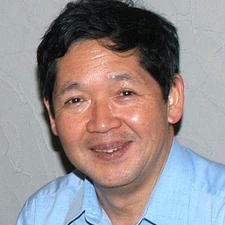Toshihiko Shimamoto

The 2015 Louis Néel Medal is awarded to Toshihiko Shimamoto for his outstanding contributions to fault and earthquake mechanics, in particular his research on fault weakening mechanisms at high slip rates.
Toshihiko Shimamoto has pioneered novel and unique experimental techniques in rock physics allowing to successfully address fundamental questions of earthquake physics. He is presently Professor at the Institute of Geology (Beijing, China Earthquake Administration). He is best known for his outstanding experimental studies that provided new fundamental insights in fault and earthquake mechanics. He paved the way for new experimental approaches. Among his important findings on mechanisms of faulting several contributions stand out: the first study on the complete transition from frictional slip to plastic flow in materials (Shimamoto, 1986); his observations of significant fault weakening at seismic (1 m/s) slip rates (Tsutsumi and Shimamoto, 1997); and the analysis of transport properties in fault zones, which provided a comprehensive analysis of fluid flow processes in fault zones (Wibberley and Shimamoto, 2003).
His experimental studies resulted in seminal papers that are highly quoted representing the forefront of research in fault behaviour. Shimamoto is an exceptional and ingenious experimentalist. He designed many experimental newly conceived apparatuses, including the first machine capable of measuring friction at seismic slip rates, the first bi-axial high-temperature apparatus, the first gas-medium tri-axial apparatus in Japan, and the first oil-medium intra-vessel tri-axial apparatus used for permeability measurements. Introducing this novel equipment allowed Shimamoto to open new fields of experimental research such as friction at high slip rates boosting the exploration of the frictional and transport properties of fault rocks that yielded a new vision of seismic faulting.
Shimamoto supervised many excellent scholars who are now core members in the Japanese and the international rock-mechanics communities. Importantly, he also taught how to design experimental apparatuses. His students learned the nuts-and-bolts of designing experiments allowing them to build their own apparatuses now. Thanks to his generosity, Shimamoto has put a lot of effort into international collaborations that resulted in extremely successful scientific production. Finally, his important experimental results and findings also frequently inspired many researchers in numerical or theoretical modeling of earthquake faulting, and of slow slip events around the downdip limit of subduction-zones.
